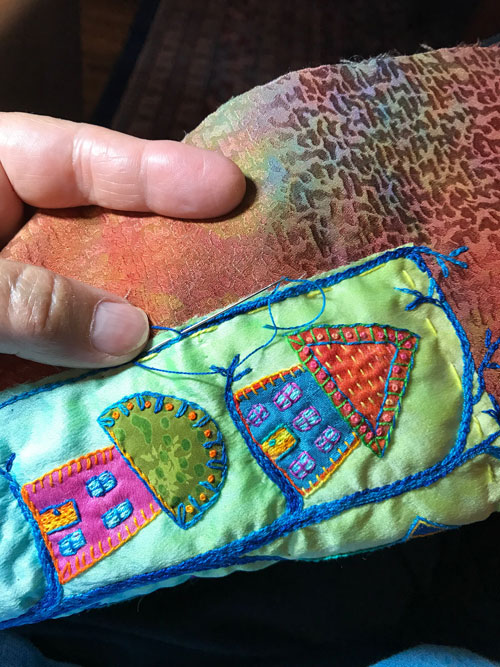My new online class, Creative Stitch Combinations, is all about combining basic hand embroidery stitches to create dynamic textures, patterns, and shapes with thread for your free-form embroidery projects. I hope you can join me!
I’ll show you my favorite ways to combine stitches using 15 embroidery stitches to create exciting and enjoyable art. Colorful examples and helpful tips are given in each of the three lessons. And there is a bonus project too!
A bonus PDF for this project, Lovely as a Tree, includes step-by-step directions and colorful illustrations on how to make this small landscape full of texture, pattern, and shapes. It’s the perfect project to put all you’ve learned into practice.
Read more about the class here on the C&T Blog. Or visit my introduction to the class on Creative Spark to learn more.








